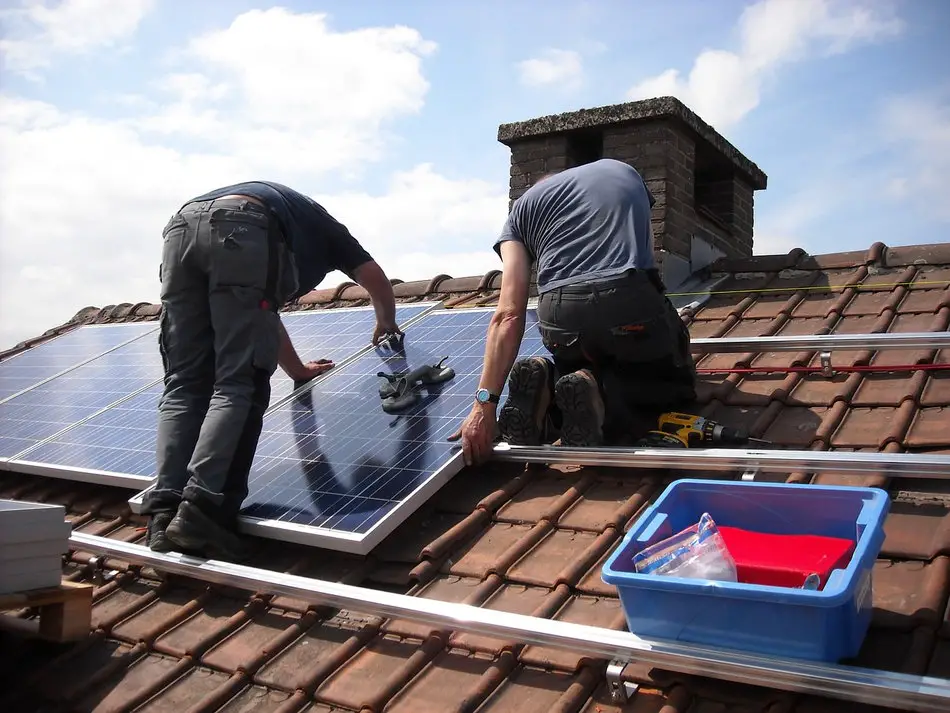Solar panels are often considered the basics of living off the grid. You produce your own electricity, independently of the country’s power grid. However, recent years saw many solar system owners becoming interested in the on grid option. I decided to “shine some light” on the differences between the two approaches.
So what is the difference between off grid and on grid solar? The off grid solar system is self-sufficient, but it might underperform and require a backup battery. On the other hand, the on grid system is connected to the local grid, therefore you will not need the battery. You can even sell the surplus energy.
Are you intrigued by the possibility of cashing out your surplus electricity? Want to read more about the differences between the two systems? Have you also heard about a third option, hybrid solar? Let’s get into more details!
The Off Grid Solar System in a Nutshell
There are many reasons for having off grid power. You want a greener energy source. You want to feel independent. You live far away from everything, can’t hook up to the big power grid and a generator is costly, noisy and polluting.
In any of these cases, the sun becomes your energy provider. You install solar panels that convert the sunbeams to electricity. They actually do not cost as much as they used to. You will also need a DC to AC inverters, since the panels produce direct current (or DC), while your appliances usually require the AC electricity (if they connect to the outlet).
Here is where it gets tricky. If you’re dreaming about going completely off grid, keep in mind that the sun is not beaming on a daily basis. You will need a backup for the literal rainy day. Some folks go for the aforementioned generator, many however purchase a reliable batter bank. Whichever you choose, that’s an additional cost to your setup.

The Advantages of the On Grid Solar System
The on grid solution is also called grid-tied system, since it’s actually connected to the power grid. Yes, you are not entirely unplugged and free as you imagined. However, in some scenarios, this system has noticeable advantages.
- You are covered on the sunless days. The utility hook-up will provide you with the power you’re currently lacking.
- Therefore, you will not need to invest into the backup battery or generator.
- If you’re producing excess electricity, it is fed back into the grid (instead of being stored in a battery). By the end of the year, you cash out whatever you’ve “donated”. That’s right, the power company could pay you back. But be sure to check with them first, as the buyback option is not always available in every area.
A possible disadvantage is when the power grid is down due to some technical difficulties. Without the back battery, you could be sitting in the dark.
Introducing a Third Solar System – Hybrid
The hybrid solar system unites the two previously mentioned options. It’s grid-tied just like the on grid system, but it also has a battery, similar to the off grid solution. However, the battery can be much smaller and cheaper. You use both the sun and the local power grid to your advantage without investing too much money into the whole setup.
The hybrid solar system has also created a need for a new type of inverters. You can control when you output the energy to your devices, when you collect it into the battery bank, and when you give it to the utility grid. Thus, you can flexibly take advantages of the electricity rates that vary in different hours of the day. Use the gird when it’s the cheapest, send them the extra watts when they pay the most.
Whichever system you choose, it can be connected to a solar generator – see the linked article for more info and suggestions.
Side note: There is a different kind of a hybrid that exists, a system that combines both solar energy and wind power. You can read more about this interesting and efficient option further down this article.
Off Grid VS On Grid VS Hybrid Solar – The Verdict
The following table compares between the three systems.

Decide for yourself which one works for you. Among the factors that should influence your decision are:
- Budget
- Local weather
- Distance to the utility hook-up
- Power company’s willingness to pay you back
While you’re making your decision, I would like to recommend the leading company in solar energy products, HQST, which has a store on Amazon. They produce high quality solar panels, solar kits, controllers, inverters and accessories. Every single product they make receives tons of positive feedback on Amazon, see for yourself. If you’re switching to clean solar energy, be it off grid or on grid, HQST has all the answers to your needs.
If you’re interested in more recommendations for solar solutions, here is my list of top 10 portable solar panels.
Do You Really Save Money with Solar Panels?
In the (not so) long run, you do save a lot of money. But don’t take my word for it. Take a look at your utility bills and check the local rates. Getting solar panels might just be the thing you need. Not convinced yet? Then know that:
- The installation of the solar system has actually become cheaper in the recent years.
- The energy costs, on the other hands, are not going down any time soon.
- You get a significant tax deduction. The so called federal solar tax credit grants you a tax break of 30% of the installation’s price. Whether you live off the grid in the USA or enjoy Canadian off the grid living, check if these tax credits apply to you.
- The solar panels last a long time and don’t demand a lot of maintenance and replacement.
- And just face it, a greener, less polluted environment also saves money in a variety of ways!
Generally speaking, you do save a lot by living off the grid – see the linked post for complete explanation and details.
Can I Add Solar Panels to My Existing System?
Extra solar panels can be easily added, which can be useful in the following cases:
- Your current on grid setup satisfies your needs, and now you intend to give something back to the power company in exchange for a payment.
- Contrarily, you want to go completely off grid. You will need a bigger battery, and more panels are needed to fill it up.
- You have a lot of unused space of your rooftop, and the thought of all that sunlight being wasted keeps you up at night.
- Your current inverter is too big for the energy that you produce, and you decide to take full advantage of its capacity. However, carefully check its capabilities. Upgrade your system according to specifications of your inverter’s MPPT inputs. Use panels with precisely the same amperage and voltage that your inverter can deal with.
Constantly expanding your solar system is what you should consider as you prepare for off the grid living.
Here is a helpful video about adding more panels to your off grid or on grid solar panels system:
Combining Wind Power and Solar Power
There is a different and quite excellent solution that answers the problem of sunless days. ECO LLC 850W Hybrid Solar-Wind Kit has:
- 150W 18V Poly Solar Panel
- 400W Wind Turbine Generator
- 1000W 12V to 110V Off Grid Inverter
All in one package! It produces electricity for your home whether there is just a wind or a sun, or both. The kit is easy to set up on your own, and its efficiency makes it an irreplaceable addition for any house – especially when you cannot always rely on the sunlight. Click the link to see more details on Amazon.
Additional Ways to Use the Sun’s Power and Cut Costs
If you’re looking to cut costs, consider thermal water heating system. It is somewhat similar to the panel, but instead of transforming the solar rays to electrical power, it traps and uses them to produce heat. The heat is carried to the water tank, and there you have it, hot water for everyone in your house. Your electrical bill will feel much lighter thanks to this invention.
There is also the passive solar design, a method that is both simple and ingenious. Basically, parts of the house itself can be used to either heat or cool it by using the sun itself and not a watt of electricity. This system does not require a lot of moving or mechanical parts. The common varieties are:
- Windows – strategically placed and easily opened to provide the necessary temperature.
- Thermal chimney – it forces the heat to rise, thus making the air move and cool the house.
- Thermal mass – parts of the building (bricks, walls, floor) or big water containers that stockpile the heat for long periods of time.
Related Questions
How much does it cost to go off grid with solar? While this question deserves a discussion of its own, the short answer is $10,000 to $15,000 for the solar panel system. A solar battery is additional $5,000 to $7,000. But don’t be deterred by the prices, this pays off quickly, and your household is greener thanks to this initial investment.
What is the best battery for off grid? There is a lot to take into consideration when answering such a question, such as the type of your solar system and your house. The quick answer is Discover 48V Lithium battery. If your home is mobile, Crown 6CRV220 battery, your RV will thank you.
Can mirrors increase solar panel output? Mirrors, or “solar thermal collectors”, focus the sunlight to heat a point. The heat can be directed to make electricity by a steam engine. The solar panels work differently, they immediately convert sunlight into electricity. If you focus heat on the panels, it will only damage them.





